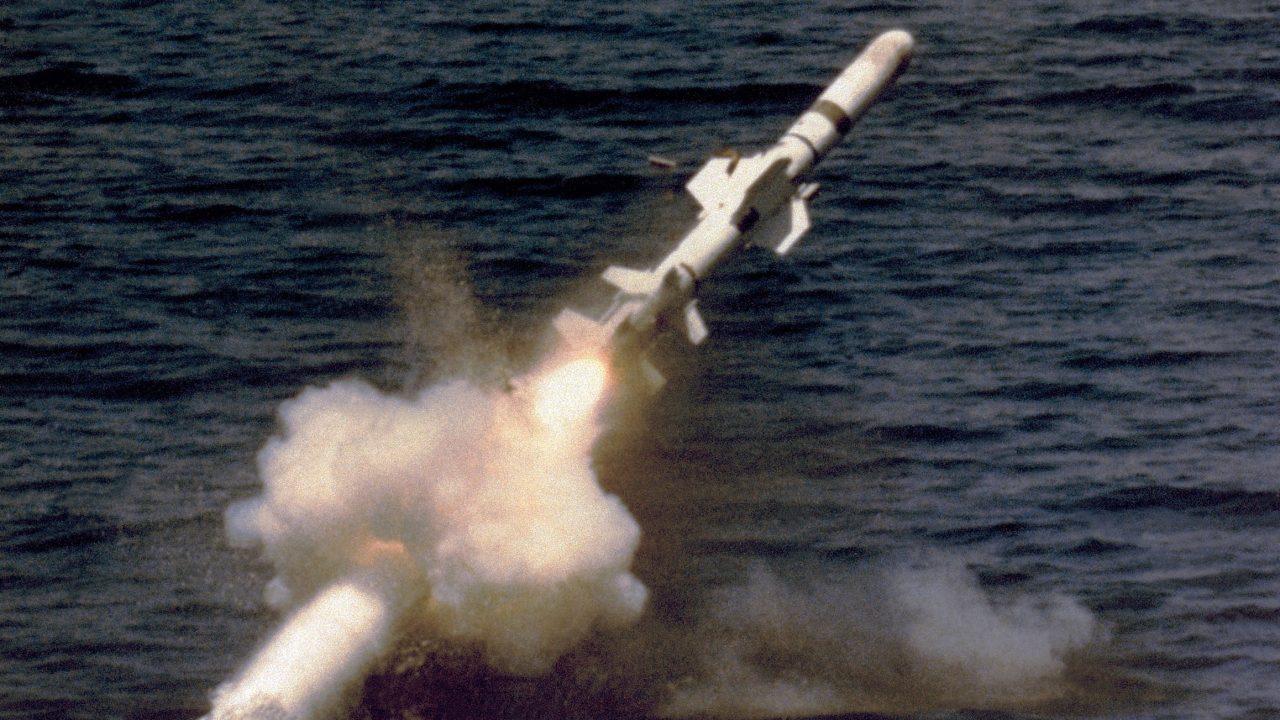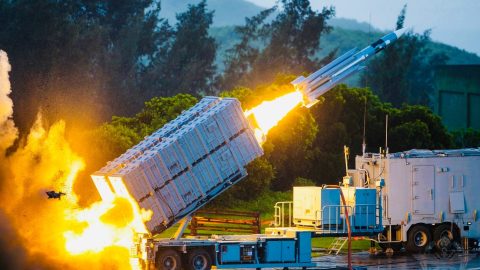In order to become an “indigestible porcupine,” Taiwan is building an arsenal designed to sink half the warships of the PLA’s massive navy
China has been building up its military at a breakneck speed, and its navy has been building up at a particularly alarming rate. One U.S. intelligence analyst, retired U.S. Navy captain James E. Fanell, recently published an article showing just how fast China’s navy is growing. Fanell, who is currently a government fellow at the Geneva Centre for Security Policy in Geneva, Switzerland, stated that the People’s Liberation Army Navy (PLAN) is already the largest navy on the planet. He added that, although it did not build as many warships in 2022 as in 2021, last year still saw the PLAN out-producing the U.S. Navy in terms of ships, tonnage and supersonic anti-ship missiles.
Most of the ten warships and one submarine that China completed in 2022 were built in Shanghai’s Jiangnan Changxing Shipyard, which the U.S. Secretary of the Navy Carlos Del Toro said is larger than all seven of the U.S.’s shipyards combined. Satellite images also show that China is building new construction sites at the Bohai Shipyard in Huludao, which is where the PLA Navy builds all of its nuclear submarines.
Fanell pointed out that the PLAN has started to build new submarines with wider pressure hulls, which are expected to be larger, quieter, and more capable than current PLAN submarines. In November last year, the U.S. acknowledged that the PLAN has started to field the JL-3 submarine-launched ballistic missile (SLBM) on its six operational Jin-class nuclear-powered SSBNs. Also called “boomers,” SSBNs are submarines that primarily carry ground-attack ballistic missiles. The JL-3 ballistic missile is estimated to have a range of 10,000 kilometers, which means China’s SSBN’s can launch them from the PLAN’s bastions in the South China Sea and still strike any point on the continental U.S.
The PLAN also managed to put its first modern aircraft carrier to sea in 2022. At 80,000 tons, the Type 003 Fujian is much larger than China’s two active Kuznetsov-class carriers, which have both already conducted carrier strike group (CSG) operations in waters east of Taiwan. Although it is still undergoing final fitments, the Fujian is scheduled to start sea trials by the end of this year, which would put it on target for war readiness by the end of 2024. Once operational, the Fujian’s cutting-edge electromagnetic catapults will enable it to launch heavy aircraft such as fixed-wing airborne early warning platforms, which will give it a much greater combat capability than its current two ski-jump-equipped carriers.
Dr. Su Tzu-yun, a research director at Taiwan’s Institute for National Defense and Security Research (INDSR), says the growth of the PLA Navy holds ramifications for all of China’s neighbors. “China is moving from land power to sea power, and the PLAN is moving from a green-water navy to a blue-water navy, aiming not only at Taiwan but also at mastering the sea lines of communication in the Indo-Pacific region. 92% of Japan’s energy and 65% of Korea’s energy must pass through Taiwan’s waters.”
As a much smaller nation with a much smaller economy, Taiwan has been forced to focus on acquiring weapons that are small enough to survive a massive initial missile barrage, while being potent enough to cause many casualties to invading forces. As most of China’s invasion forces would have to be transported over 180 kilometers of ocean, it makes sense that Taiwan has focused on weapons that can destroy a large number of China’s warships and troop transports.
Together with Taiwan’s anti-air and anti-submarine defenses, these anti-ship defenses form a strategy of being like an “indigestible porcupine,” meaning that Taiwan aims to make it so expensive and risky for China to invade it, that it would not be worth the enormous cost.
For this reason, Taiwan is currently in the process of acquiring hundreds of the U.S.’s Harpoon anti-ship missiles, while also manufacturing its own range of supersonic and subsonic anti-ship missiles. Taiwan’s military calculated that it needs around 1,200 anti-ship missiles to deter a Chinese invasion by being prepared to sink half of China’s invasion fleet. To fill in the temporary gaps in its arsenal, Taipei announced in May 2021 that it would spend a whopping $2.4 billion to buy 400 new Harpoon anti-ship missiles from Boeing. These upgraded Block II Harpoons can attack ships up to 160 kilometers away, which means they can strike PLAN warships as they leave the Chinese harbors that lie closest to Taiwan. The reason why Taiwan is buying 400 Harpoons is because their delivery would bring the total number of Taiwan’s ship-killer missiles to the target of 1,200.
However, due to long delays in the U.S.’s weapons delivery schedule, it is currently unclear when the bulk of these Harpoons will be delivered to Taiwan. This uncertainty increases the importance of Taiwan’s missile manufacturer, the National Chung-Shan Institute of Science and Technology (NCSIST), to increase its ability to produce its own ship-killer missiles at a faster rate.
One of the most potent of the NCSIST’s Taiwan-made shipkillers is the Hsiung Feng III (HF-3, 雄風三型), a supersonic missile that can reportedly cruise at speeds of up to Mach 3. Like the Harpoon, the HF-3 can be launched from a truck or a ship, from where it can cruise at supersonic speed for up to 150 kilometers. Taiwan will reportedly start mass producing an extended-range version of this powerful missile this year. This variant will increase the missile’s kill range from 150 to 400 kilometers. Taiwan is also producing other anti-ship missiles, like the HF-2, which has a range of 120 kilometers.
Dr. Su says he calculated that it takes on average around 24 months and $1 billion to build a warship, but it only takes a few days and $1 million to build an anti-ship missile. “If you consider that it would require only around 5 such missiles to sink one enemy ship, then it becomes clear that anti-ship missiles offer a big opportunity for defenders to gain an advantage in terms of spending and military effectiveness.”
Taiwan’s hundreds of anti-ship missiles would be deployed by truck and by its fleet of around 117 vessels, which include 43 smaller patrol vessels as well as a number of non-combatant support vessels. These smaller vessels are hard to detect with radar, while being just big enough to carry and fire a handful of large ship-killer missiles. Taiwan’s navy also has 14 minelaying vessels, with which it plans to quickly lay deadly minefields in the waters off the island’s most invasion-friendly beaches, if China launches an invasion.
The NCSIST is also building kamikaze drones like the Chien Hsiang (劍翔, “Rising Sword”). The official name for this kind of drone is “loitering munition.” It’s basically a flying smart bomb with radiation-detection systems, wings and a small propeller that cruises at 185 kilometers per hour on a pre-programmed flight pattern. Fitted with radar-homing technology, its role is to loiter over the warzone and look for targets. Once it senses radar energy coming from the right kind of target — like a Chinese warship — it locks on and drops down on to the target, detonating its sizable warhead on impact.
To defend itself against the PLAN’s vast numbers of warships and submarines, Taiwan is also fast-tracking its ambitious program to build its own diesel-electric submarines, called the Indigenous Defense Submarine (IDS). The first IDS sub is currently on track for delivery in September of this year. If everything goes according to schedule, it will start sea trials around February next year, with final delivery expected in the first half of 2025. Taiwan aims to build between nine and 11 of these 70-meter-long submarines, which will join its current two active submarines — Zwaardvis-class subs built by the Netherlands for Taiwan in the 1980s — to form a potent threat that can sink many PLAN warships in a theoretical invasion.
The weapons that these submarines would use to defend Taiwan are currently a few dozen submarine-launched Harpoon anti-ship missiles and 200 aging SUT wire-guided torpedoes. To replace these aging SUT torpedoes, Taiwan got permission in 2017 from the U.S. Congress to buy 46 of America’s modern Mark 48 Mod 6 AT heavyweight torpedoes. Originally scheduled for delivery in 2028, the U.S. has now fast-tracked the delivery date of these torpedoes to 2025.
The Mark 48 Mod 6 AT torpedo is 5.8 meters long and weighs 1.7 tons, which includes a 295-kilogram high-explosive warhead. It can be launched from as far as 50 kilometers from the target. After launching, it homes in on the acoustic signature of the target vessel. The torpedo is designed to detonate under the target, at which point its huge warhead creates a powerful pressure wave that can easily break the keel of large warships, thereby destroying the target’s structural integrity and causing it to sink rapidly.
If all goes to schedule, Taiwan would be able to deploy at least three submarines armed with Mark 48 torpedoes and Harpoon missiles by 2025. Taiwan would then be hoping to complete the remaining eight to ten IDS subs as soon as possible. Armed with powerful Harpoon missiles and up to 18 Mark 48 torpedoes, each one of Taiwan’s submarines would be able to lurk deep under the ocean’s surface, capable of sinking multiple PLAN warships before it has to return to base to reload.
Image: U.S. Navy, Public Domain









Leave a Reply